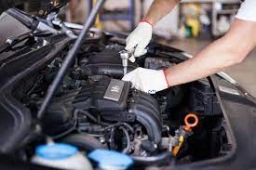Traveling 82597
What constant braking force is required to stop a car weighing 1 ton in 10 seconds traveling at 50 km/h?
Final Answer:

Tips for related online calculators
Do you want to convert mass units?
Do you want to convert velocity (speed) units?
Do you want to convert time units like minutes to seconds?
Do you want to convert velocity (speed) units?
Do you want to convert time units like minutes to seconds?
You need to know the following knowledge to solve this word math problem:
Units of physical quantitiesthemes, topicsGrade of the word problem
Related math problems and questions:
- Braking 83146
 A car of mass m=1t moves at a speed v0=54 km/h. What braking force must be exerted to bring the car to a stop in 10 seconds, and how far will the car travel in this time?
A car of mass m=1t moves at a speed v0=54 km/h. What braking force must be exerted to bring the car to a stop in 10 seconds, and how far will the car travel in this time? - Braking distance
 The car travels at an average speed of 12 km/h and detects an obstacle 10 m in front of it. At 1 m in front of the obstacle, it already runs 2 km/h. What is the braking distance? What is the required deceleration for a stop: A) 1m B) 1s?
The car travels at an average speed of 12 km/h and detects an obstacle 10 m in front of it. At 1 m in front of the obstacle, it already runs 2 km/h. What is the braking distance? What is the required deceleration for a stop: A) 1m B) 1s? - Car deceleration
 The car is traveling at a speed of 54 km/hour. The driver starts braking with an acceleration (deceleration) of 3 m/s². Specify the time in which to stop.
The car is traveling at a speed of 54 km/hour. The driver starts braking with an acceleration (deceleration) of 3 m/s². Specify the time in which to stop. - Brakes
 The braking efficiency of a passenger car is required to stop at 12.5 m at an initial speed of 40 km/h. What is the acceleration braking by brakes?
The braking efficiency of a passenger car is required to stop at 12.5 m at an initial speed of 40 km/h. What is the acceleration braking by brakes? - Driver
 The car driver drove at 100 km/h saw the obstacle and began braking with a slowing of 5 m/s². What is the pathway's length to stop the car when the driver has registered the obstacle with a delay of 0.7 seconds?
The car driver drove at 100 km/h saw the obstacle and began braking with a slowing of 5 m/s². What is the pathway's length to stop the car when the driver has registered the obstacle with a delay of 0.7 seconds? - Constant motion
 The car has undergone constant motion, traveling 120 km in 1 hour and 30 minutes. Determine its average speed. Also, determine how long the car drove in the first 20 minutes and 50 minutes after starting the move.
The car has undergone constant motion, traveling 120 km in 1 hour and 30 minutes. Determine its average speed. Also, determine how long the car drove in the first 20 minutes and 50 minutes after starting the move. - Acceleration 2
 If a car traveling at a velocity of 80 m/s/south accelerated to a speed of 100 m/s east in 5 seconds, what is the car's acceleration? Using Pythagorean theorem
If a car traveling at a velocity of 80 m/s/south accelerated to a speed of 100 m/s east in 5 seconds, what is the car's acceleration? Using Pythagorean theorem
